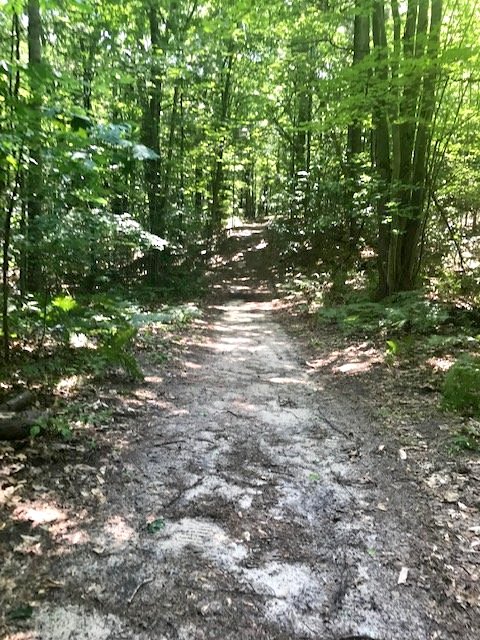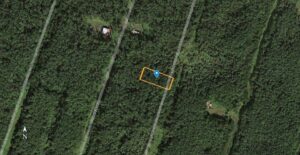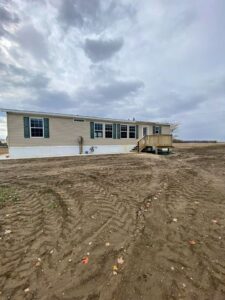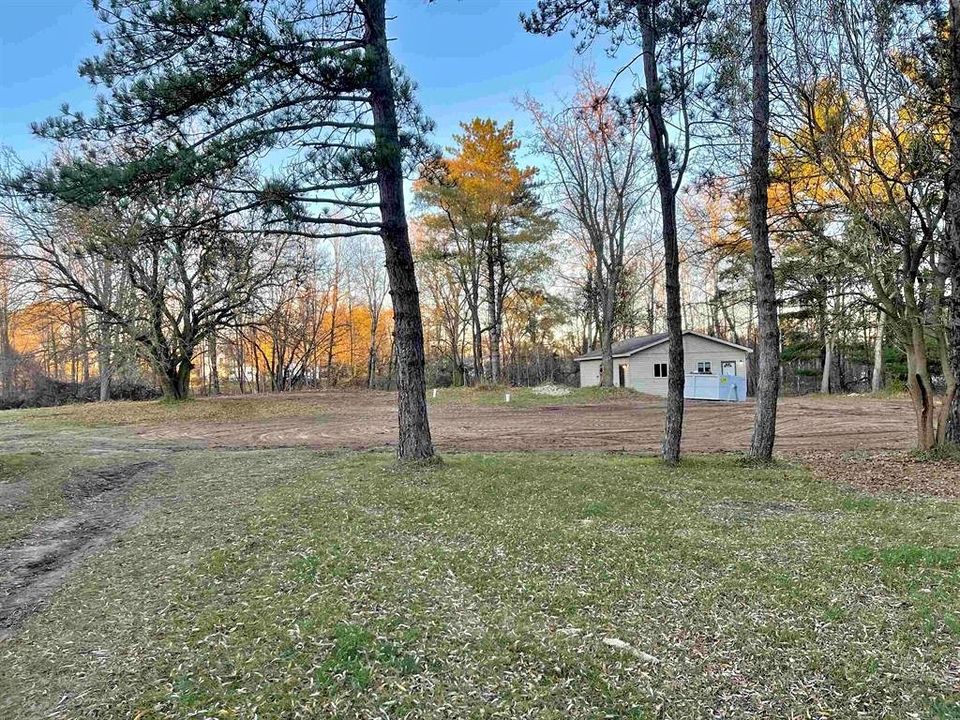Ever wondered about the true size of an acre? Are you curious to know how much land one acre actually encompasses? Whether you’re a prospective homeowner, a farmer, or just someone with an inquisitive mind, understanding the dimensions of this unit can be quite enlightening. We’ll explore its physical dimensions and provide relatable examples to help you grasp its enormity. So, if you’ve ever pondered over the question “How big is 1 acre?” and sought a straightforward answer without wading through complex measurements or technical jargon, then look no further. Let’s dive right in and unravel the mystery behind this ubiquitous unit of measurement.

Historical Origin of the Acre
The Definition
The acre has a fascinating historical origin that dates back to the middle ages. Derived from Old English and Anglo-Saxon words, it was historically defined as the amount of land a yoke of oxen could plow in one day.
During medieval times, an acre was not based on specific measurements like today’s standardized units. Instead, it represented the practical capacity of agricultural labor in a day.
Evolution Over Time
Originally, an acre varied in size depending on factors such as soil fertility and farming techniques. This meant that an acre in one region might have been larger or smaller than an acre in another area.
As time progressed and societies developed more advanced methods for measuring land, efforts were made to standardize units like the acre to ensure consistency across regions.
Understanding an Acre in Square Feet
The Size of an Acre
An acre is a unit of measurement commonly used to quantify large plots of land. One acre is equivalent to 43,560 square feet. This means that if you were to draw a square and each side was approximately 208.71 feet long, the area of that square would be exactly one acre.
Visualizing this vast expanse can be challenging, but understanding the size of an acre in square feet helps put its magnitude into perspective. Imagine a football field (including both end zones) – it’s about 1.32 acres in size.
Considering that many people are familiar with the dimensions and layout of a standard football field, this comparison provides valuable insight into just how big an acre truly is.
Practical Applications
Understanding square footage and grasping the size of an acre becomes particularly important when dealing with real estate or agricultural purposes. For instance, when someone mentions owning several acres of farmland or investing in a five-acre property for development, having a clear comprehension of what these measurements entail is crucial.
Moreover, for those interested in landscaping or gardening on their property, knowing the exact dimensions can help plan and allocate space effectively without underestimating or overestimating available land.
Comparing Acres to Square Miles
Vast Difference
One square mile contains 640 acres, showcasing the vastness of a square mile compared to an acre. To put it into perspective, imagine walking across 640 football fields laid out next to each other. That’s how much acreage is encompassed within a single square mile.
The comparison between acres and square miles emphasizes the significant difference in scale when measuring land. While an acre might be suitable for a small garden or backyard, a square mile is more suited for extensive farmlands or large rural areas.
Scale of Land Measurements
Understanding the relationship between acres and square miles provides valuable insight into the total area of land. For example, if you have ever driven past farms or rural areas and wondered about their sheer size, knowing that these expansive properties could potentially span several hundred or even thousands of acres can truly boggle the mind.
In terms of visualizing this scale in urban settings, consider that Central Park in New York City covers approximately 840 acres. Now picture over half that size as one single unit – that’s roughly equivalent to one and a quarter square miles!

Visualizing the Size of an Acre
Understanding the Dimensions
An acre is a substantial unit of measurement, and visualizing its size can be quite challenging. To put it into perspective, a single acre is roughly equivalent to 43,560 square feet. This means that if you were to lay out 1-acre plots end to end, you would need almost 209 plots to cover one mile.
When considering the width and length of a single acre, it’s helpful to think in terms of yards or football fields for better comprehension. Picture an American football field including both end zones; this entire space measures about 1.32 acres. By comparing these dimensions with familiar objects or spaces like buildings or sports fields, individuals can gain a clearer understanding of just how large an acre truly is.
Using Visual Aids for Comprehension
One effective method for comprehending the size of an acre involves using visual aids such as maps or diagrams. For instance, overlaying the dimensions of an acre on a map can help individuals grasp its expanse in relation to their surroundings. Utilizing diagrams that compare different units (e.g., square feet and acres) can aid in solidifying one’s understanding.
To further illustrate this point, consider imagining your dream home sitting on a plot measuring exactly one acre. Visualize all the space around your house extending outward by approximately 208 feet in every direction – that’s how much room there would be! Another way to visualize this vast area is by thinking about plowing land; it takes time and effort because you’re covering so much ground!

Estimating Land Size with Acre Reference
Importance of Understanding Land Size
Understanding land size in terms of acres is crucial when dealing with real estate. It provides a practical reference point for assessing the dimensions and potential usage of a piece of land. For instance, when browsing through real estate listings, knowing how big 1 acre is can help individuals visualize the scale and make informed decisions about potential properties.
A clear understanding of acreage also aids in estimating how much land is needed for specific purposes, such as building a home or starting a farm. By grasping the concept of an acre, individuals can better comprehend the space required for their intended projects or developments.
Practical Applications in Real Estate
Real estate listings often use acres as a standard measurement for land size. This makes it essential for prospective buyers to have an idea of how much land they are considering purchasing. For example, if someone sees that a property consists of 5 acres, having prior knowledge about the size allows them to mentally picture the expanse and evaluate whether it aligns with their requirements and plans.
Moreover, understanding acreage enables buyers to compare different properties more effectively. If one property offers 2 acres while another provides 10 acres, this information immediately conveys significant disparities in land size without needing additional calculations or visualizations.
Pros and Cons
Pros:
Facilitates informed decision-making when assessing potential real estate purchases
Allows individuals to estimate space required for various projects or developments
Cons:
Lack of familiarity with acre measurements may lead to difficulty visualizing actual land sizes
In some cases, reliance on acreage alone may overlook other important aspects such as terrain features

Residential Plot Sizes Versus an Acre
Residential Plot Sizes
The residential plot sizes can vary widely, with many being measured in fractions of an acre. For example, a typical residential lot might be around one-quarter or one-half of an acre. This means that multiple homes can fit within the space of a single acre. Understanding this helps homeowners and buyers grasp the amount of land they are dealing with.
Knowing how many homes can fit within an acre provides valuable insight into the spacing and layout of neighborhoods. It also gives individuals a better understanding of their own property’s size and potential uses.
For instance, if someone owns a two-acre lot, they could potentially build several houses on it depending on local zoning laws. On the other hand, for those dreaming about having spacious yards or including amenities like tennis courts or swimming pools on their properties, knowing how much space is available in an acre is crucial.
Space Insight
Understanding the size of an acre is essential for homeowners and buyers as it allows them to envision what can be accommodated within that area. Whether it’s building multiple houses for investment purposes or creating ample outdoor spaces for recreational activities, grasping the expanse of an acre offers valuable insight into potential land use.
Moreover, when considering purchasing land for personal use or real estate development projects, having a clear idea about acreage helps in making informed decisions regarding property layouts and maximizing its utility.
In addition to housing developments, knowledge about acres also plays a vital role in agricultural planning. Farmers need to understand how much crop yield they can expect from each acre so that they can make efficient planting decisions based on available space.
Commercial Versus Residential Acreage
Different Acreage Needs
Commercial properties often require larger acreage than residential properties. This is because commercial establishments, such as shopping malls, office buildings, and industrial sites, need more space to accommodate their operations and provide ample parking for customers and employees. On the other hand, residential properties like homes typically occupy smaller plots of land since they are designed for individual or family living spaces.
Understanding the differences in acreage needs between commercial and residential sectors is crucial for real estate planning and development. For instance, when planning a new shopping complex or an industrial park, developers must consider the amount of land required to construct the buildings along with adequate space for parking lots and landscaping. Conversely, when developing a residential neighborhood with single-family homes or townhouses, it’s essential to allocate smaller parcels of land to each property while also factoring in green spaces and community amenities.
Impact on Zoning Regulations
The variation in acreage needs between commercial and residential properties significantly impacts zoning regulations set by local governments. Zoning laws determine how different areas of land can be used within a municipality or county. These regulations specify whether an area is designated for commercial use (such as retail stores or manufacturing facilities) or residential use (for housing purposes). The size requirements outlined in zoning ordinances directly influence where these types of developments can be located.
Moreover, zoning regulations also dictate the allowable density of dwellings within a given area. In some cases, there may be restrictions on how many homes can be built per acre in a residential zone to ensure that neighborhoods maintain a certain level of open space and do not become overcrowded.
Property Valuations
Another critical aspect impacted by differing acreage needs is property valuations. The value assigned to both commercial and residential properties is influenced by their respective land sizes relative to market demand. Larger tracts of land suitable for commercial ventures tend to have higher valuations due to their potential income-generating capacity from businesses operating on them.
Conversely, smaller plots allocated for residences are appraised based on factors such as location desirability within communities, proximity to amenities like schools and parks, as well as the overall condition and features of the dwellings themselves.
You may also be interested in this article: Mobile Home Appraisal: A Complete Guide

Factors Influencing the Cost of an Acre
Location and Topography
The price of an acre is significantly influenced by its location and topography. For instance, an acre of land in a rural area might cost much less than the same size plot in a bustling city. This is because urban areas often have higher demand for land due to their proximity to amenities like schools, hospitals, and shopping centers. The topography of the land plays a crucial role in determining its value. A flat, easily accessible piece of land may be more expensive than one with steep slopes or other geographical challenges.
Understanding these factors can help potential buyers comprehend why a parcel’s price varies from one location to another.
Zoning Regulations and Agricultural Potential
Zoning regulations also play a pivotal role in determining the cost of an acre. Land designated for commercial use will typically fetch a higher price compared to agricultural or residential-zoned parcels due to its potential for development. Moreover, if local zoning laws restrict certain types of construction or activities on the property, it could impact its market value.
Furthermore, when considering agricultural potential as a factor influencing price, it’s important to note that fertile soil suitable for farming increases the worth of an acreage. Conversely, if the land has poor soil quality or limited water access for irrigation purposes, it may be priced lower.
For example:
In rural areas with relaxed zoning regulations and high agricultural potential due to fertile soil and ample water supply may command higher prices per acre.
On the contrary, plots located in urban areas with stringent zoning laws but limited space available for development might have lower values despite being closer to amenities.
Advantages of Owning Acreage
Privacy and Diverse Activities
Owning 1 acre or more of land provides a significant amount of space, offering homeowners the privacy they desire. With this much land at their disposal, individuals can engage in various activities such as farming, gardening, or recreational pursuits. For instance, those with a green thumb can cultivate their own fruits and vegetables right in their backyard. Families can enjoy outdoor activities like camping or hosting gatherings without worrying about disturbing neighbors.
Acreage ownership also presents an opportunity for individuals to connect with nature on a deeper level. Farmers who own large plots of land have the freedom to raise livestock and grow crops while enjoying the tranquility that comes with rural living. This connection to nature is invaluable for many people seeking a slower pace of life away from bustling urban areas.
Development and Investment Opportunities
Apart from providing personal enjoyment, owning acreage offers potential for development and investment opportunities. Homeowners may choose to develop part of their land by building additional properties such as guesthouses or rental units. By doing so, they can generate extra income through renting out these spaces to tenants.
Furthermore, purchasing acreage allows individuals to potentially benefit from future increases in property values due to development projects in the surrounding area. For example, if new infrastructure developments are planned nearby—such as roads or commercial centers—the value of the acreage could significantly increase over time.
Creating an Ideal Living Environment
One notable advantage of owning acreage is having the ability to create one’s ideal living environment with ample space and freedom. Unlike traditional suburban homes where properties are often closely packed together, homeowners with substantial amounts of land have greater flexibility.
For example:
They may build custom homes tailored specifically to their needs.
They can add amenities like swimming pools or sports courts without worrying about limited space.
Families have room for expansion should they decide to grow through adoption or welcoming new family members into their home.
Closing Thoughts
So, there you have it – an acre may seem like just a unit of measurement, but it holds significant weight in the real estate and land ownership world. From its historical roots to its practical implications in today’s market, understanding the size and value of an acre can empower you to make informed decisions when buying or selling property. Whether you’re picturing the vastness of a farm or contemplating the size of a potential homesite, knowing the ins and outs of an acre puts you in the driver’s seat. So, next time you hear about an acre of land for sale, you’ll have a clearer picture of what that really means for you.
Ready to put your newfound knowledge to use? Go ahead and explore some local listings or take a drive out to see some acreage for yourself. The possibilities that come with owning an acre are waiting for you to seize them!
Frequently Asked Questions
How did the acre measurement originate?
The historical origin of the acre dates back to medieval times when it was defined as the amount of land a yoke of oxen could plow in one day. Over time, its size has varied, but today an acre is standardized at 43,560 square feet.
What are some common comparisons for visualizing the size of an acre?
To help visualize an acre’s size, think of it as roughly equivalent to about 75% of a football field. It’s also close to the size of a standard city block or approximately two-thirds the size of a soccer field.
What factors influence the cost of an acre?
Several factors impact the cost per acre, including location (rural vs urban), access to utilities and amenities, soil quality, topography, zoning regulations and potential for development. These variables can significantly affect land value.
What are some advantages of owning acreage?
Owning acres provides opportunities for privacy and space while enjoying nature and outdoor activities. It also offers potential for agricultural use or development projects. Owning larger tracts may provide investment and tax benefits.
You may also be interested in these articles:
Living Spaces for Mobile Homes vs. Stick Built Homes
Mobile Home Blue Book: Understanding Value & Maximizing Returns
Land and Home Package Deals: Exploring Benefits, Financing, and Equity Growth

